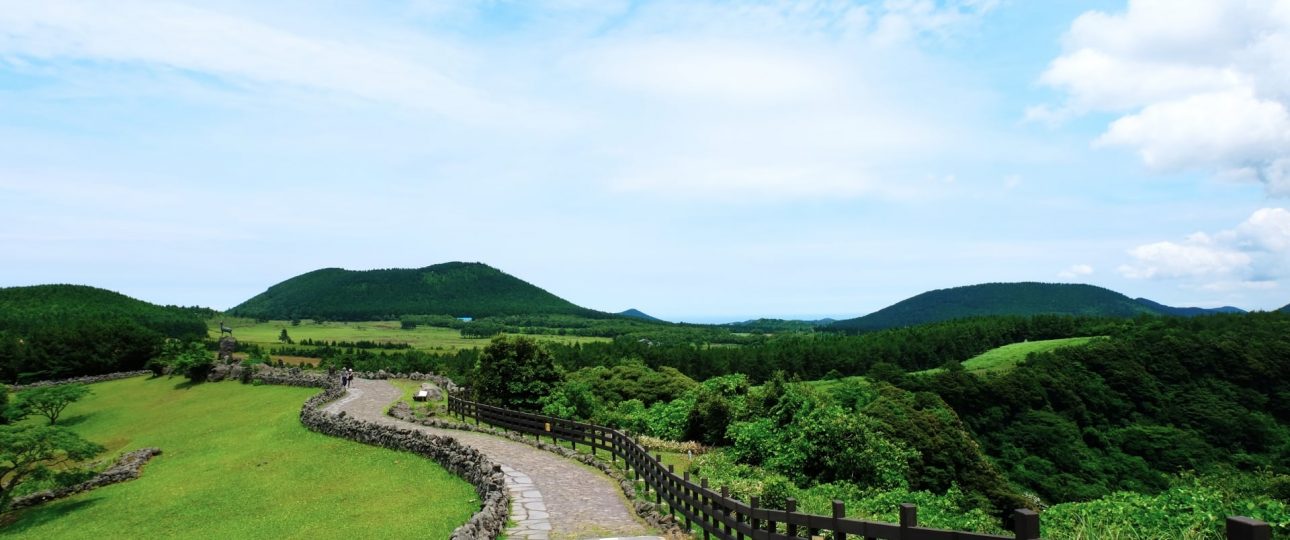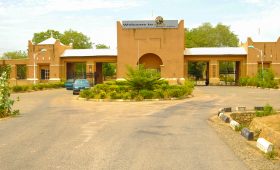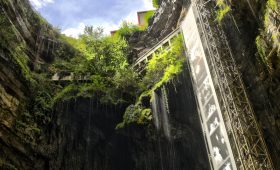Introduction
Welcome to a journey through one of South Korea’s most captivating natural wonders, the Sangumburi Crater on Jeju Island. While it may not be as famous as some of the island’s other attractions, Sangumburi offers a unique blend of geological marvels and lush biodiversity that makes it a must-visit for nature enthusiasts and curious travelers alike.
Location and Geological Significance
Sangumburi Crater is located on the southeastern side of Jeju Island, a volcanic island off the southern coast of South Korea. This natural monument was formed over 25,000 years ago during a volcanic eruption. Unlike typical volcanic craters, Sangumburi is a maar, characterized by its broad, shallow depression. It measures approximately 650 meters in diameter, 100 meters deep, and 2,070 meters in circumference, resembling a vast, natural amphitheater.
Flora and Fauna
The crater is renowned for its diverse ecosystem. The northern area, known as Nandaeseong, is home to red thorn trees, magnolias, and the rare winter strawberry. The southern region, Ondaerim, features firs, maples, and wild strawberry trees. This rich variety of plant life has made Sangumburi a focal point for ecological research and a haven for biodiversity.
In the center of the crater lies a small wetland, providing a habitat for endangered species of frogs and insects. This unique environment offers visitors a chance to observe and appreciate the delicate balance of nature.
Best Time to Visit
Sangumburi Crater is particularly stunning from October to January when the silver grass surrounding the crater creates a shimmering landscape reminiscent of rippling silver waves. Autumn is a popular time for visits, with the foliage turning vibrant shades of red, orange, and yellow. This period also attracts couples seeking picturesque settings for wedding photos.
To avoid crowds, consider visiting early in the morning or on weekdays, especially during peak tourist seasons.
Visitor Experience
Exploring Sangumburi Crater is a serene experience. The walk around the crater takes approximately 40 minutes to an hour, with well-maintained paths guiding you through the landscape. Comfortable shoes are recommended, as some paths are rocky and uneven.
There is ample parking available, and the entrance fee is 6,000 won for adults. While some may find the price a bit steep given the size of the area, the unique beauty and tranquility of the crater make it a worthwhile visit.
Getting There
Reaching Sangumburi Crater is straightforward. From Jeju City, you can take a taxi or rent a car for a convenient 40-minute drive. Public transportation is also an option, with regular buses from Jeju City taking about an hour. Be sure to check the local bus schedule for the latest information.
Additional Amenities
At the crater, you’ll find a cozy café and a gift shop, perfect for a relaxing break or picking up a souvenir. Volunteer guides are available to enrich your visit with insights into the crater’s history and ecological significance. Don’t hesitate to engage with them for a deeper understanding of this natural wonder.
Conclusion
Sangumburi Crater is a remarkable destination that offers a blend of natural beauty, ecological diversity, and cultural significance. Whether you’re drawn by the vibrant colors of spring or the serene hues of autumn, a visit to Sangumburi promises an unforgettable experience. Embrace the tranquility, explore the unique landscapes, and immerse yourself in the rich tapestry of life that thrives within this ancient volcanic crater.




